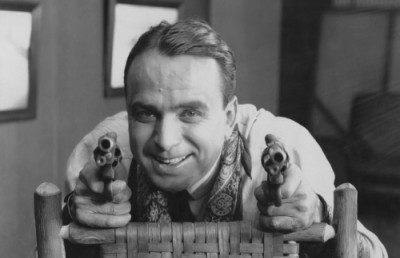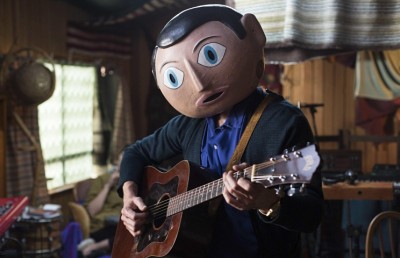Faith and Disbelief, Commerce and Culture: Wadjda and A Hologram for the King, two films with stories inspired by Saudi Arabia

Saudi Arabia, a country known both for its glamor and for its religiosity, is a society of clans and claims, of public piety and private pleasure, of cash and consumption. Saudi Arabia, a country of Arabs, Bedouins, Negroes, emigres and guest workers and visitors, in west Asia, on the Arabian Peninsula, is a land of deserts, mountains, and plateaus as well as villages and cities. Wadjda is, apparently, the first feature film in which the action was photographed entirely in the kingdom of Saudi Arabia, a conservative country in which images are monitored by religious censors, official and not—and women suffer the indignities of male control and surveillance. Wadjda, directed by Haifaa Al Mansour, has been recognized as the first motion picture by a Saudi woman; and the film takes the name of its lead character, a girl—a gesture of affirmation; and the film begins with schoolgirls reciting a religious chant, dressed in long black gowns. Saudi Arabia is a nation and society of power and fragility, of fame and secrecy, of honor and shame. It is the society that its director, the daughter of poet Abdul Rahman Mansour, one of twelve children, Haifaa Al Mansour, was born and reared in, before graduating from Cairo’s American University with a bachelor’s degree in comparative literature and Australia’s University of Sydney with a Master’s degree in film studies. In the town of Riyadh in Haifaa Al Mansour’s photoplay, the girl Wadjda (Waad Mohammed), a bright-eyed, aware, confident, slim spirited girl, is wearing black-and-white tennis shoes with bright blue laces, whereas other girls are wearing the requisite black dress shoes; and Wadjda waves to an acquaintance, and, observed by a teacher, Wadjda is asked to recite alone and then sent outside when she does not. She is shy but, also, she has not mastered the religious text. Wadjda is not a pious girl—she likes contemporary music and has a little business, making bracelets in celebration of sports teams for other girls. Wadjda’s attractive mother (actress Reem Abdullah), a teacher, works and gets a car ride to work, transportation she shares with other women who need the required male driver—she covers her modern clothes with a black gown for the ride with other teachers to school. (The mother has a good relationship with her husband, warm and sensual and humorous, but as she has not produced a son for him, she is worried about her marriage.) Wadjda’s father (actor Sultan Al Assaf)—after days away for his oil industry job—returns; and father and daughter have an easy rapport too, as Wadjda does with a young male friend, Abdullah, a boy with a bike—and Wadjda wants a bike too, and sees a green one that becomes a goal. Wadjda, a spirited girl, both feminine and masculine, is the subject of a small, intimate film that feels as large as the world: a world of childhood and maturity, of innocence and knowledge, of intimidation and courage. Wadjda has a great spirit—as does the young actress playing her, Waad Mohammed.
The current—cultural, political, structural—state of the nation of Saudi Arabia is young—and was established in 1932 by Abd Al-Aziz bin Abd al-Rahman al Saud, with the unification of the regions of Al-Hasa, Qatif, Nejd and Hejaz—yet the kingdom of Saudi Arabia goes back to the year 1744, with the alliance between a politician and a cleric, an alliance that explains much of today’s conservative cultural politics in the country: the ruler of the town of Ad-Dir’iyyah near Riyadh, a man named Muhammad ibn Saud who wanted to conquer the Arabian peninsula, and became allied with the cleric Muhammad ibn Abd-al-Wahhab, a member of a clan of scholars and judges, a Quran devotee, a fundamentalist preacher hostile to religious imagery and symbols and approving of stoning. Allegiance to the beliefs of the cleric constrains Saudi social and political vision (and forced observance, no doubt, contributes to a great deal of hypocrisy). The country is ruled by a king who is both a political and a religious figure; and the king has the royal family and a council of ministers as well as tribal leaders as advisers (currently the deputy crown prince is a leading figure); and Islamic law and Sunni traditions shape regulations, rituals, and routines. The puritanism of desert tribes remains appalled by the cosmopolitanism of cities: the representation of human beings in art is suspect in such an influential and insistently primitive culture, in which image, sound, and word have symbolic power that is seen as competing with religious authority—thus, it is no wonder that there are few films made in Saudi Arabia. Yet, contradictions persist: country versus town, homogeneity versus heterogeneity, tradition versus modernity. How does one respond to a restrictive culture? Simply—by going back to childhood, beginning with the spirit of a girl, her courage and curiosity and intelligence and strength. Haifaa Al Mansour’s film Wadjda is a genuine breakthrough, a real accomplishment for both Saudi Arabian culture and world cinema. “Wadjda has the distinction of being the first feature film ever shot in Saudi Arabia. And perhaps even more significantly, it is the first feature written and directed by a Saudi Arabian woman, the talented Haifaa Al Mansour,” said Deborah Young, in The Hollywood Reporter (Aug 31, 2012), covering the 2012 Venice Film Festival. The film writer and director Haifaa Al Mansour brought together a Saudi crew and a German crew, among whom there were differences—the Germans were very hard-working and the Saudis more relaxed, but those differences were soon modified with the Germans become more relaxed and the Saudis more hard-working, the two groups blending. The director filmed the girls in a private boys’ school, rather than the public girls’ school. “By filming inside the school, Al Mansour throw open a curtain on a previously closed world not that different, in the end, from certain religious schools in the West that some viewers may have attended. There is the same obsession with sex on the part of the teachers, who are no angels themselves, and the same attempt to regiment happy young children into narrow social roles. If they succeed on the whole, there are always special cases like Wadjda who slip through the tight net, giving the story a decidedly upbeat ending,” said Deborah Young, who commended the film’s actresses: “The three excellent main actresses are subtly directed, yet leave an indelible impression of the different paths women’s lives can take.” (Young seems to refer to the actresses playing mother and daughter and also the school principal: Waad Mohammed, Reem Abdullah, and Ahd Kamel.) The subject of women’s freedom is an important one, in a kingdom—ruled by royalty, a council of ministers, an assembly of consultants, and religious courts—in which the appearance, movements, and morality of women are circumscribed (until recently women did not vote).
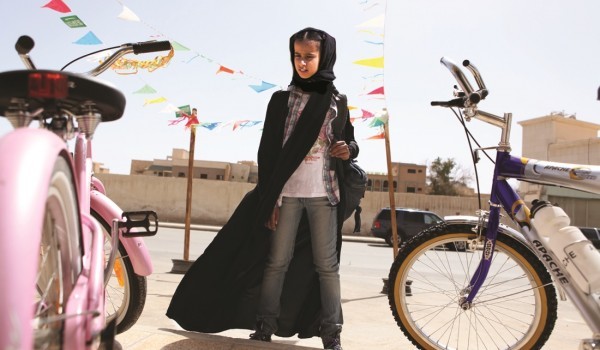
The photography of Wadjda captures the ordinary world of the daily life of home and school and work, of streets and stores. Writing about the cinematography of the film, the photographer and internet log writer Donatello Romanazzi described the film Wadjda as fine—Romanazzi commended its photographic technique for being natural, observant, objective, simple, and stable. Of the film’s cinematographer Lutz Reitemeier, who used an Arri Alexa camera with Zeiss Master Prime lenses (Arriraw format), Romanazzi wrote with bold emphasis: “Being a German, there’s no surprise he chose to shoot with an Alexa and Zeiss Master primes, whose sharp image he diffused with filters. From the beginning of the film, Reitemeier uses a very natural look, rooted in his background as documentary cinematographer: the camera is like a voyeur who leads us in the street of Riyadh, into places where no man is allowed to enter, into the ordinary life of the characters. The story is told in a simple way, without pretension nor looking for effectiveness: camera barely moves, when it does it is on steadicam following the characters, and it is always placed in positions which are as objective as possible, unless for the very wide shots, in which Wadjda walks alone, and stands out, through desolated and ruined Arabic urban landscapes, symbolizing her solitude fight for her dreams as a person and rights as a woman against the deep rooted Arabic traditions” (Donfilm’s Darkroom, July 17, 2013).
Haifaa Al Mansour, the director who made several short films mostly about the lives of Arab women—_Who? _ And The Bitter Journey and The Only Way Out_—before making the documentary _Women Without Shadows and then Wadjda, was influenced by her observations of life, her own, the life of an artist and a wife and mother, and that of family and friends and neighbors and strangers. Haifaa Al Mansour has said that she did not want to complain about Saudi life, but instead to present a heroine whose spirit and determination were answers, solutions, for the problem of constraint. The same is true of the tenacity of Haifaa Al Mansour as a creative artist—her tenacity is a solution. “The writer-director, Haifaa Al Mansour, was forced to direct many exterior scenes from the back of a van, as cultural mores prevented her from openly communicating with her mostly male crew. To add to the production’s conspicuousness, Al Mansour’s collaborators were largely foreign: though Wadjda did receive funding from the Saudi Prince Alwaleed bin Talal (who owns his own production company), it heavily depended on German equipment and resources culled from a number of studios, eventually providing the film with an international distribution network,” reported film reviewer Matt Levine, a film critic who wrote his master’s thesis on Louis Feuillade and wrote about the film Wadjda for the online site Joyless Creatures (February 19, 2014), finding the film engaging and hopeful though sometimes didactic. Of course, certain lives, inevitably, intersect with ideas and politics—they do not have the luxury of being merely personal. It’s regrettable that western observers do not remember that consistently—and assume the liberty and the shallowness of their own lucky circumstances is the general standard; and yet, who wants a purely or even mostly political existence? The difficulties of filmmaking in Saudi Arabia, for anyone but especially for a woman, has become part of the legend of the film—though the meaning of those difficulties, not just their practical effect, are not consistently registered: conformity and convention dominate almost everything, the private and the public, the artistic and the political. Defiance must be negotiated—carefully. Matt Levine, who appreciated the deft characterizations of the males in the film (particularly of Wadjda’s friend, the boy Abdullah), went on to write, “Al Mansour’s uncompromising devotion to her film—and her adamancy in shooting entirely in her homeland, despite the obstacles this decision presented—are undoubtedly trailblazing, pointing towards the future potential of a burgeoning Saudi cinema.”
Religion regulates human behavior—and attempts to change human nature. The girls at Wadjda’s school are reprimanded for laughing, for not covering their heads, for immodesty. Yet Wadjda (Waad Mohammed) is harassed—sexually harassed—by grown men, a shocking fact: how do people who are pious about public religious observance accept disrespect of women, the mothers and daughters and sisters and colleagues whom they insist protect their own honor? Are women expected to be modest and pious—but not men? Does the forced piety of public life actually degrade personal awareness, choice, and response? Does repression compel rebellion? For Wadjda the harassing man is a perplexing nuisance but merely a nuisance. She has other concerns—she sees a bicycle she wants—with which she can race Abdullah (Abdullrahman Al Gohani). Wadjda tells her mother of her desire for a bicycle—the mother who spends three hours in transport, being driven by a sometimes impatient man, but her mother does not think her daughter should have her own transportation.
Religion regulates human behavior—and attempts to change human nature. The schoolgirls—beautiful, cultivated—are encouraged to flee the male gaze, and most of them do; and, yet, they are attracted to feminine presentation, forms that gratify their aesthetic sense and also attract them: bracelets, nail polish, things that draw attention. There are complexities, contradictions: a school authority, Miss Hussa (Ahd Kamel), a rather sour-looking woman, is rumored to have a lover—who was observed at her window, and explained away as a thief; and another young woman, Abeer, pays Wadjda to deliver a message to a young man, arranging a meeting, an assignation that gets the young woman in scandalizing trouble. (The young woman told Wadjda that the young man was her brother and the message had something to do with her permission-to-exit card.) After the young woman’s assignation with a young man is discovered, Wadjda’s bag is searched by the woman school principal: found are her music and football club bracelets. (Wadjda had delivered the message from the young woman to the young man, and that is suspected—but no evidence is discovered, so she cannot be punished. The principal, Miss Hussa (Ahd Kamel), forbids wearing tennis shoes to Wadjda.
Wadjda’s mother is not foolish or hypocritical but she does observe conventions. She refuses to take a job that will require she work with men, but needs a driver to take her to work, hours away from home. Wadjda and her mother (Reem Abdullah) are friendly, intimate in conversation but sharp in disagreement too; and they sing while preparing a meal. They have a comfortable relationship. The mother wants to buy a dress for Wadjda’s uncle’s wedding (to discourage other women from interest in her husband, who may take a second wife), as she confides in Wadjda, whom she takes shopping with her. When Igbal the driver reprimands Wadjda’s mother for lateness, the mother accepts the censure but Wadjda reprimands the driver for his rudeness. The mother, with Wadjda, goes to a store to find the perfect dress that will intimidate other women—and tries on an impressive red gown.
Wadjda (Waad Mohammed) is shrewd and tough but sensitive too. She sees her mother in the red dress—a beautiful woman, but one senses Wadjda finds the refinement of appearances less than a personal necessity and prefers activity. She wants the bicycle salesman to feel friendly toward her, to keep her in mind for the green bike she has her eyes on; and she gives the bike salesman a mix-tape, an attempt at ingratiation. When Wadjda learns of the prize money attached to a religious recitation contest, she decides to join the religion club. She buys an instruction program to help her learn—and, meanwhile, Wadjda’s mother (Reem Abdullah), after her disagreement with the car diver, tries to find a new driver. The director has said that the relationship of women and drivers is contentious as both think they are in charge—the women because they are paying for the service and the drivers because the women cannot go anywhere without men. Wadjda asks the boy Abdullah (Abdullrahman Al Gohani) to help her get to the neighborhood where the driver, Igbal, lives—to confront him, to help her mother regain transportation. Abdullah helps—mentioning to Igbal that his own uncle is powerful. The two children are successful. Wadjda, also, asks Abdullah to help her learn to ride a bike after he asks to string electric lights from her family’s roof (she is a negotiator). Wadjda, having joined the religious club, reads from the Quran and her readings are rough, but she is determined. (Wadjda and her mother wash and say morning prayers together.)
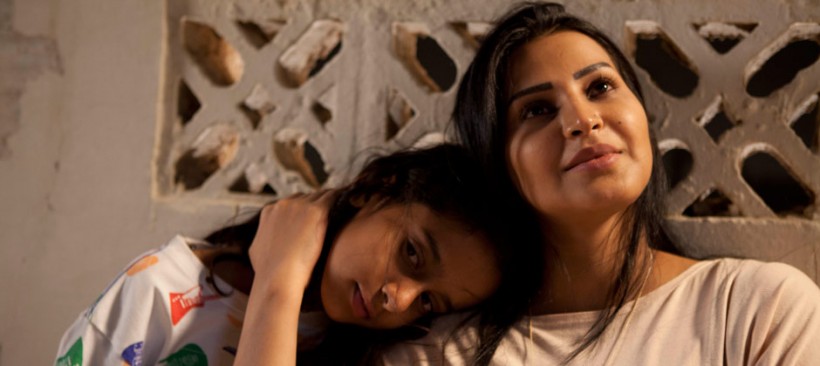
Two girls talk, look at magazines, and share nail polish—are friends, but even their girlish friendship inspires surveillance and suspicion. Miss Hussa, the principal, describes the school as a place of learning and morals before reprimanding the two girls in front the assembled school for inappropriate behavior. Suspicion is accepted as proof of bad behavior. (But what are the girls learning but religion? It’s not clear.) Girls have little presence and power. Wadjda’s oil industry worker father, so often away from home for work, meets with men for meals served by women who do not sit to eat with them. Wadjda, being a girl, is not included on her father’s illustration of his family tree; and, yet, a girl classmate—equally young—is married to a man of twenty years. A girl’s voice must not be heard by men—but a girl can be married to a man almost twice or sometimes three times or more her age?
Wadjda’s friend Abdullah, who first gave her a veil, a traditional item, gives Wadjda a bike helmet, a sign of affection and practicality. Wadjda’s religious study progresses—she gains knowledge and can recite from memory. Her mother helps her achieve a more singing tone for her recitations. (The actress playing her mother, Reem Abdullah, is radiant, and good at being mercurial—maternal, girlish, angry, romantic with father and jealous too.) In the school recitation contest, Wadjda recites a verse about faith and disbelief, peace and mischief—and, as its content is accusatory, it could be a bit self-incriminating. Wadjda wins the contest—but when she announces that she wants to buy a bike with her winnings, she is refused the prize money by the sour principal. Wadjda’s father, wanting a son, takes a second wife, as Wadjda’s mother cannot bear more children; and, rather than buying a seductive dress, Wadjda’s mother buys Wadjda the desired green bike—and Wadjda, as she wished, races Abdullah—and wins. Charming girl, charming movie: both embody courage and intelligence, the elemental drives and virtues of humanity.
One can value the film from various perspectives—aesthetic, intellectual, spiritual, political. It is often a pleasure as well as enlightening to see a different part of the world, especially a land of myth and rumor such as Saudi Arabia. “The contradictions of Saudi society are on display in these women’s actions as well as in the mise en scène, but they are never belabored. On an ad in a mall bathroom someone has taped over the model’s neck and wrist; the guest worker who drives Wadjda’s mother to work lives in far poorer conditions than anyone else in the film,” observed Violet Lucca in Film Comment (Aug 26, 2013). “Equally remarkable are the contradictions inherent in context in which the film—the first feature by a woman shot entirely in Saudi Arabia—was made,” wrote Violet Lucca, adding, “The country is home to Rotana Group, the Arab world’s largest entertainment conglomerate, but has produced less than 10 feature-length films, including documentaries, since 2006. (Prior to that, there were no Saudi-made films.)” As the Rotana Group is a project of a Saudi prince, it seems possible, even proof, that even power can be inspired by art. One of Shakespeare’s sonnets, the 65th, asks, “How with this rage shall beauty hold a plea / Whose action is no stronger than a flower?” but that is a question that art answers generation after generation. Time is both creator and destroyer—but art can open us to beauty, and once open we might become patient, thoughtful, understanding.
Writer Alan Scherstuhl in The Village Voice (September 11, 2013) noted the fundamental appeal of the film’s story and lead actors, the children, beginning with Waad Mohammed: “Mohammed’s charisma and the film’s appreciation for the hopefulness of children keep all this from becoming too grim to bear. Just seeing life in Riyadh is a revelation. Al Mansour frames the city’s slab-like structures in static compositions, slightly off-center, and then sets the kids loose to dash around and through them. The feeling is of effervescence among a stolid permanence.”
A Hologram for the King by Tom Tykwer
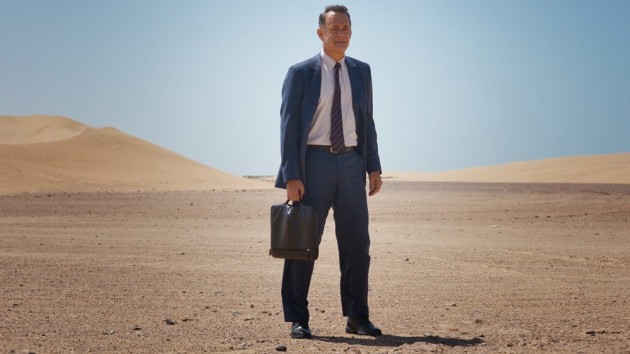
A Hologram for the King begins with a dream sequence invoking change, loss, popular culture, and a drastic change of scene—using a Talking Heads song (“Once in a Lifetime”)—and the American salesman (Alan Clay, played by Tom Hanks), waking from his dream of a changing life, order become chaos, is a passenger on a plane surrounded by praying Islamists, all going to Saudi Arabia, a kingdom in which oil has been a great natural resource and key to financial power and social security. Saudi Arabia, bordering the Persian Gulf and the Red Sea, north of Yemen in the Middle East, is one of those countries looked to for financial investments—and that is why it is Alan Clay’s destination. Sleepy, disoriented, haunted by a skeptical boss’s admonition for success, Alan Clay arrives to meet his work team. Alan Clay is in Saudi Arabia to sell a new business tool: a hologram to facilitate communication. Clay finds in the kingdom of sand and splendor robed men playing games with an electronic tablet and Clay sees other robed figures assembled on a large television screen—the juxtaposition of tradition and modernity. Alan gets a driver—the man has an old car with which to take Clay to the desert location of his business contact (the driver is a man with his own story, an infatuation with a married woman who has a threatening husband). The driver, Yousef (Alexander Black), is a curious and friendly man, a cherub with a head of curls, a man who has visited America for school and likes old American pop music (Elvis, Chicago, and Electric Light Orchestra). Alan Clay is lucky to have met him. A man of low-key quirky humor and melancholy, of both hope and dread, Alan arrives to find his team without electronic connection, food, or air conditioning in a hot tent in the desert. They are not being treated as if they are important. Alan’s Saudi Arabian contact, Karim, is not there to meet or direct Alan. Alan Clay is blandly introduced to the construction project site, for which little work has been done—and Clay does not notice immediately the class distinctions among Arabs (or how dismissively his driver is treated by members of the king’s staff). Alan is adrift in Saudi Arabia, with the imperative to make a business success of the 3-d homographic teleconference equipment that makes distant communication easy, intimate, and safe.
A Hologram for the King, an international production from Lionsgate and Roadside Attractions, mostly filmed in Morocco, is a cool, gorgeous, orderly film—the people, the rooms, and landscapes are shown from different angles, clearly, quickly, leaving one with a sense of comprehension. The photoplay was directed by the German filmmaker Tom Tykwer, who studied philosophy at the Free University in Berlin and worked as a repertory theater projectionist and film programmer, screenplay editor, and photographer of television portraits of cinema directors, before beginning his own film production company. Tom Tykwer’s filmography includes features and short films, including the features Deadly Maria (1993), Winter Sleepers (1977), Run Lola Run (1998), The Princess and the Warrior (2000), Heaven (2002), Perfume (2006), The International (2009), and Cloud Atlas (2012) and the short films Because (1990), Epilog (1993) and True (2004). Tom Tykwer gained renown for Run Lola Run, but even in the subsequent Perfume his technique can be discerned: attention both to a large canvas and the smallest detail, with an ability to accept the complexities, even perversities, of human nature. The Alan Clay story adapted by Tykwer was originated by the memoirist, fiction writer, and publisher Dave Eggers, the author of the memoir A Heartbreaking Work of Staggering Genius (2000), and the fictions You Shall Know Our Velocity (2002), What is the What (2006), The Wild Things (2009), and, among other books, the novel A Hologram for the King (2012), which had been inspired by his brother-in-law’s business trip to Saudi Araba and his own subsequent visit there. Dave Eggers, who was born in Boston before becoming a resident of California, is also the founder of the literary press McSweeney’s and the journal The Believer; and Eggers wrote the screenplays for the films Away We Go (2009) and Where the Wild Things Are (2009). The writer Pico Iyer, the son of a philosopher father and religious scholar mother, and the author of a study of American literature, The Recovery of Innocence (1984), as well as the novel Abandon (2003) among many other works, described the Eggers novel A Hologram for the King as “a clear, supremely readable parable of America in the global economy that is haunting, beautifully shaped and sad” in the New York Times (July 19, 2012). Pico Iyer compared Eggers to Hemingway for ambition and adventure, though I thought of both Henry James and John Steinbeck—James for the focus on the international scene and Steinbeck for the sympathy for faltering people. Tom Tykwer found strong material to bring to film. Tom Tykwer’s film interpretation of A Hologram for the King “finds a rhythm and engages us in the struggle of the central character, such that it feels as if we might happily keep watching for three hours, not just 97 minutes. It becomes a kind of world, and we’re glad to be in it,” wrote film critic Mick LaSalle in the San Francisco Chronicle (April 21, 2016), commending the talent of director and his leading man, Tom Hanks—and the actor’s choice to emphasize the professionalism of his character—duty before desperation—amid a changing global landscape, with shifting power dynamics.
The sun in the motion picture is marvelous, bright, suffusing all; and the streets are busy, and there is a surprising sense of familiarity. Alan is haunted by memories of his bitter divorce—and the need for money to pay for daughter’s college. Alan’s daughter is understanding of his difficulties but asks him to do well—for his sake, hers, and for the good opinion of his former wife. Alan’s father disapproves of international trade—giving business manufacturing to other countries. (Alan was with a bicycle company that made bikes in America, then China, ending American jobs. His father razzes him about that.) He has a large cyst on his back as well. Alan Clay in Saudi Arabia has a purpose but he is adrift—haunted by his divorce, insecure about the work project, and worried about a lump on his back. As Alan, Hanks is believable as a man whose likability and integrity are part of his authority; and Hanks is at an age when a man is attractive without being handsome or sensual (character and cleanliness do the work of sensuality). The receptionist in the Saudi Arabian corporate building at which Alan arrives, the first representative Alan meets, is new and not helpful (dressed in black clothing, she wears very colorful headscarves, a telling detail—an expression of creativity and personality, despite cultural constraint). The Danish helper (Hanne, pronounced Hanna, played by Sidse Babett Knudsen), an associate of Alan’s contact Karim, tells Alan that the king has not been there for months—and she gives Alan a bottle of liquor. Alan drinks, and drinks too much: and with drinking comes memory, hallucination, self-surgery, nausea. It is a bit of chaos in a film that has a very clean, organized, aesthetic with little repetitions—hotel welcome, car travel, shower, drinking, memory. One soon realizes that these little bursts of chaos recur, disrupting the order of both man and society.
Conservative societies offer inspiration for both story and structure—as there is little confusion about what is important, what brings danger, what may be lost. The virtues and vices have been named. The treasure and the treason identified. One merely has to identify one’s own temptations and ideals—and that is where there may be conflict. Yet the film does not present caricatures or clichés—it has the ambiguity of real life, an ambiguity that appeals to modern book readers and film audiences. “It’s a sweet, deliberately meandering movie, but it took me a little while to connect with it. But it won me over because ultimately it conveys so well that feeling of estrangement that is both terrifying and comic for any farflung traveler,” observed reviewer Peter Rainer in the Christian Science Monitor (April 22, 2016). In A Hologram for the King, Alan makes personal contact with his driver, and, later, his doctor. Alan has local food with his driver, Yousef (Alexander Black), who picks out the fish that will be cooked for them—and they enjoy a delicious, earthy meal; and Alan gives the driver advice for love and honor, tells him to talk to the married woman’s husband about the flirtation, explain that it is not an affair. Alan goes to a doctor for his cyst—and talks with her, Dr. Hakim (Sarita Choudhury), about his lack of energy and focus. Hanne invites Alan to the Danish embassy for a party, and there comes on to Alan, initiating sex—but Alan, though finding her attractive, is not interested. Alan complains about conditions to his contact, Karim (Khalid Laith), who takes Alan to the new condos being built (Karim lived in American for about five years; knows Alan’s bike company history; and Karim, in a western business suit, is—like the other Arab project officials suave, trim, efficient—modern. The western style has been mastered by others). The condo, with its false advertising signs, its truncated paths, its maze, its laboring Filipinos fighting, has an impressive sales room suite, a model suite.
Alan, in his beautiful (austere and modern) hotel room, has an anxiety attack—which he feels might be a heart attack—and he calls the woman doctor and his driver, who both come—and subsequently Alan goes with the driver to the man’s home village, with a brief (forbidden) excursion to Mecca. Alan faces suspicion as a westerner but he is invited to a wolf hunt (wolves have been killing sheep). The driver, Yousef, talks about a lack of life options in Saudi Arabia—and the driver speculates about a revolution for democracy in Saudi Arabia; and asks if Alan would support him if that were to happen—and Alan says yes. Alan sees a wolf but as it does not attack a sheep Alan does not shoot—one senses he does not want to kill. He is beyond easy murder, as he is beyond easy sex, in a world in which he is adrift.
“It’s a fragmented world—divided between city and desert, between religions, classes, men and women—and Tykwer revels in the all-consuming unease. In his film, the display of a Saudi lingerie store in which the female models’ faces have been removed can double as both a symbol of sexual oppression and Antonioni-esque malaise,” wrote film critic Bilge Ebiri in The Village Voice (April 20, 2016). Bilge Ebiri noted the melancholy meaning of the film—the absences and alienation—and the continuing mystery of power. Eventually, though not inevitably, the business presentation is made to the king within a newly decorated tent, demonstrating the hologram technology of Alan Clay’s company—and the demonstration seems to go well. Dr. Hakim (Sarita Choudhury) operates on Alan’s cyst, removes it; and they have an e-mail flirtation. They share their personal stories: Dr. Hakim is getting divorced, and has two teenage children. She takes Alan to her beach house and they go snorkeling. (“I met a number of absolutely fierce Saudi women who are nudging the country toward progress, through incredible feats of bravery on the one hand, and then simple subterfuge on the other,” Dave Eggers told John Williams in an interview published in the June 20, 2012 New York Times.) Dr. Hakim and Alan Clay have found each other. Alan’s life has changed: Alan finds new love, new work, and a new home.
The film A Hologram for the King turns into the most unexpected story of love. The director Tom Tykwer described it for journalist Tom Friend of the magazine The New Yorker (May 9, 2016): “The whole movie is an anticlimax, yes,” the director said placidly. “Alan could be just a sad, late-capitalism loser, an analog man who grew up selling things you can touch, like the Schwinn bicycles that every American I ever meet once had. But he isn’t, because he’s Tom Hanks. Tom enchants you even as Alan is using all these past-their-date-of-selling-by tricks, like his ‘Hey, where are you from?’ greeting. He throws images of himself at other people that they have to eat—but that mask in his eyes slowly deteriorates until it collapses, like old America. And when Tom falls in love with the Saudi doctor”—played by Sarita Choudhury—“when he’s in bed with her, it’s amazing. He looks like a reborn.”
(Submitted December 2016)


